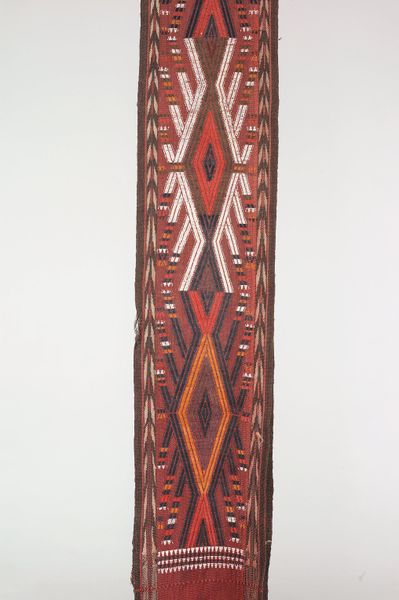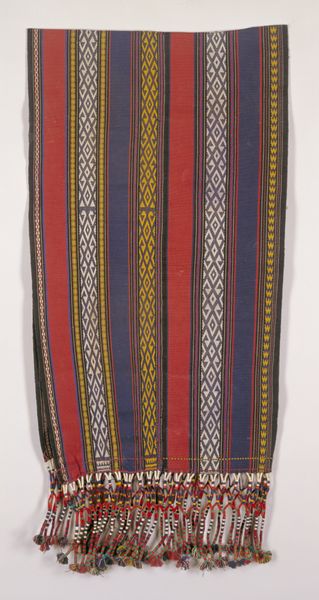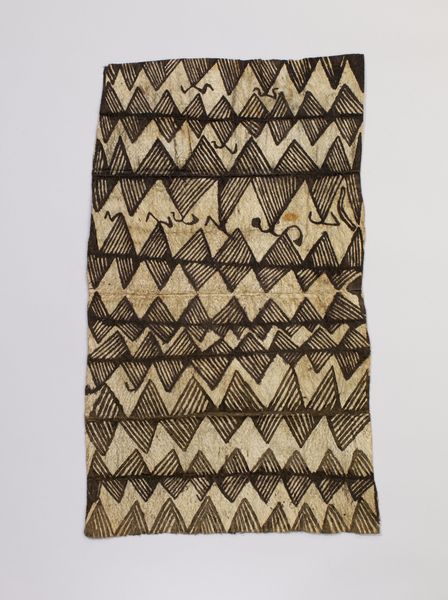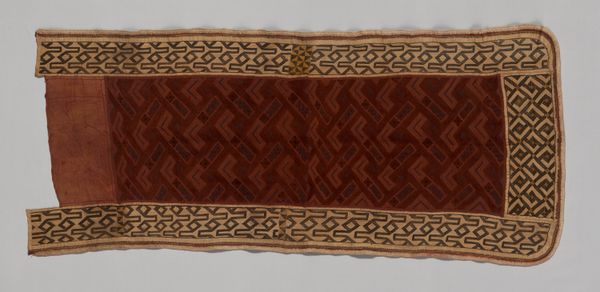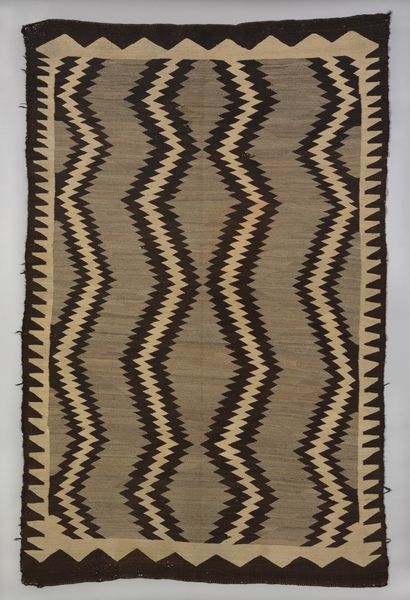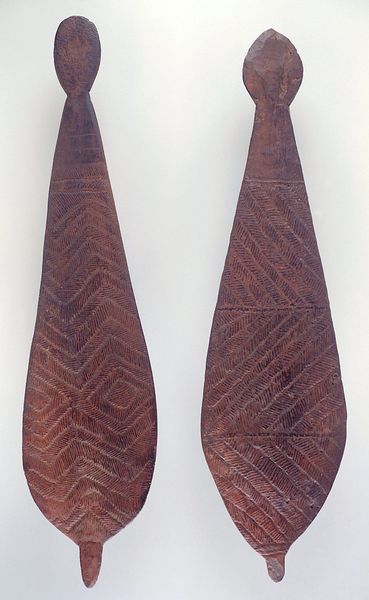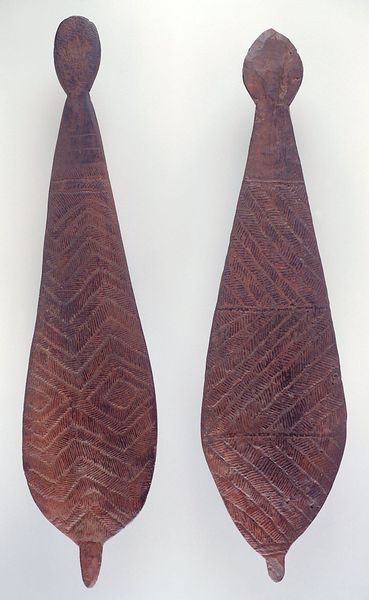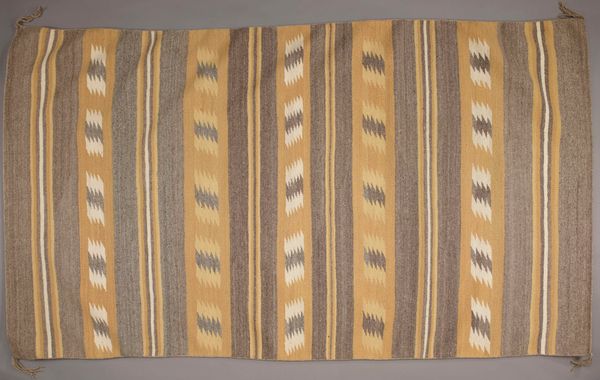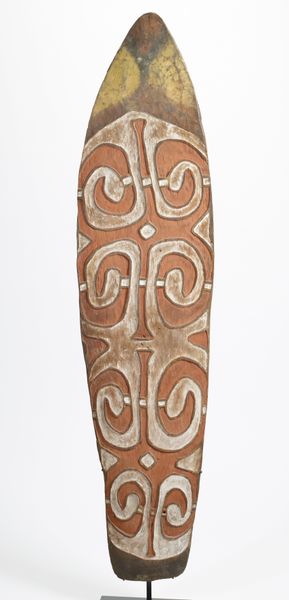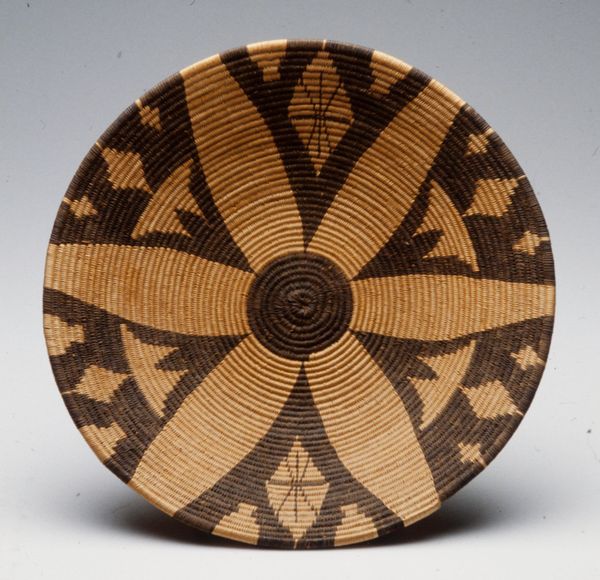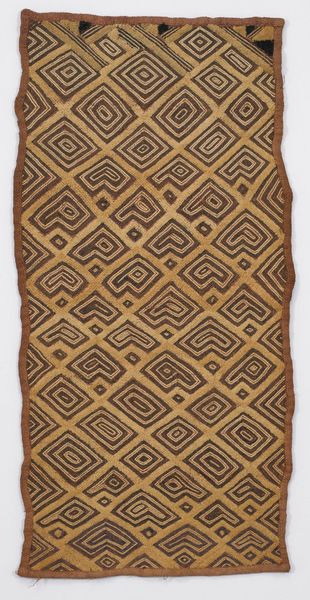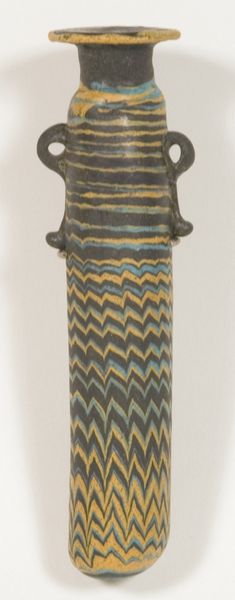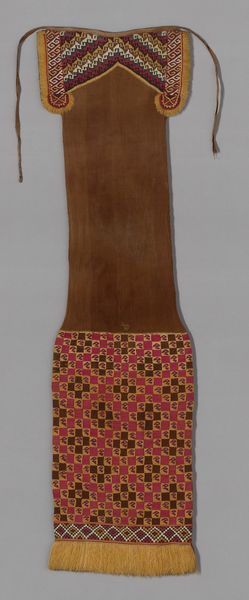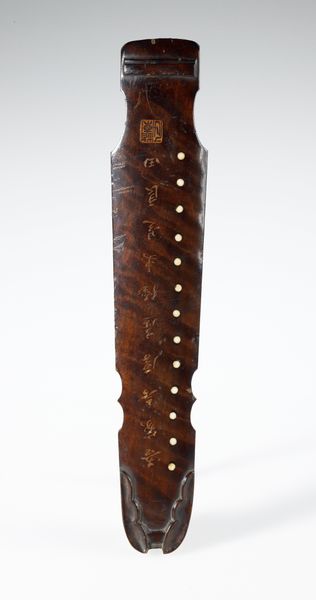
fibre-art, weaving
#
fibre-art
#
weaving
#
geometric
Dimensions: 55 x 17 x 4.5 in. (139.7 x 43.2 x 11.4 cm)
Copyright: Public Domain
Editor: So, here we have an object titled "Shield," created by the Poto people, probably in the late 19th or early 20th century. It’s fiber art, woven primarily of wood and displayed here at Mia. The geometric patterns are immediately striking. It feels powerful but also has this rhythmic, almost soothing quality to the design. What symbolic significance do you think the imagery holds? Curator: The visual language employed within objects such as this ‘Shield’ operates on multiple levels, touching the psychological and cultural dimensions of the Poto people. Notice the weaving: Consider it a tactile form of storytelling, with each manipulated fiber bearing memory. Do the repeated chevrons speak to you? Editor: Yes, the zigzag pattern, like mountain ranges or perhaps even the course of a river… it could suggest journey or protection? Curator: Indeed. And what does protection signify beyond the immediately practical? Often, such shapes reference ancestral pathways or spiritual guardians, layering the function of a tool of war with a call to one's cultural memory. The indigenous visual lexicon reminds us how inextricably intertwined the sacred and secular once were. Editor: That’s fascinating. The abstraction makes it seem less overtly about conflict and more about… navigating life itself? Curator: Precisely. By abstracting such things as landscape or myth, it touches a collective understanding that persists through time. Think of such a shield, then, as less an object and more a vessel for cultural identity and fortitude. Editor: I’ll definitely look at indigenous art with different eyes from now on! The continuity of meaning is something I hadn't fully considered before.
Comments
No comments
Be the first to comment and join the conversation on the ultimate creative platform.
